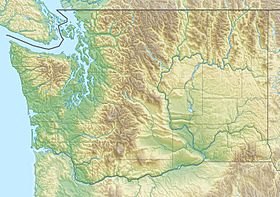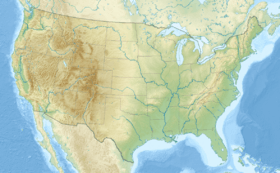Big Craggy Peak facts for kids
Quick facts for kids Big Craggy Peak |
|
|---|---|

Big Craggy Peak seen from northeast
|
|
| Highest point | |
| Elevation | 8,470 ft (2,580 m) |
| Prominence | 3,070 ft (940 m) |
| Isolation | 10.05 mi (16.17 km) |
| Parent peak | Monument Peak (8,592 ft) |
| Listing | Highest Mountain Peaks in Washington |
| Geography | |
| Location | |
| Parent range | Okanogan Range North Cascades Cascade Range |
| Topo map | USGS Billy Goat Mountain |
| Climbing | |
| Easiest route | class 2+ scrambling |
Big Craggy Peak is a tall mountain in Washington state, USA. It stands about 8,470 feet (2,582 meters) high. This peak is found in western Okanogan County.
Big Craggy Peak is part of the Okanogan Range. This range is a smaller part of the larger North Cascades mountains. The mountain is quite remote, about 12.5 miles (20.1 km) north of Mazama. It is located on land managed by the Okanogan National Forest.
Big Craggy Peak has two smaller peaks nearby. These are North Peak (8,205 feet) and West Craggy (8,366 feet). West Craggy is right on the edge of the Pasayten Wilderness. The closest taller mountain is Monument Peak, which is about 10 miles (16 km) away. Big Craggy Peak is one of Washington's 100 highest peaks. Water from the mountain flows into Eightmile Creek. This creek then joins the Chewuch River.
Contents
Understanding the Climate Around Big Craggy Peak
Have you ever wondered why some mountains get so much snow? Most weather systems start over the Pacific Ocean. They then travel northeast towards the Cascade Mountains.
How Mountains Affect Weather
When these weather systems reach the North Cascades, the tall peaks force the air upwards. As the air rises, it cools down. This causes the moisture in the air to turn into rain or snow. This process is called Orographic lift. Because of this, the western side of the North Cascades gets a lot of rain and snow. This is especially true during the winter months.
Summer vs. Winter Weather
In winter, the weather is often cloudy. But in summer, high pressure systems form over the Pacific Ocean. These systems often bring clear skies. This means there is usually little or no cloud cover during the summer.
The Amazing Geology of the North Cascades
The North Cascades mountains are known for their rugged and dramatic look. They have sharp peaks, tall spires, long ridges, and deep valleys carved by glaciers. These unique shapes were created by geological events that happened millions of years ago. These events also caused big changes in elevation, which led to different climates.
How the Mountains Were Formed
The Cascade Range began forming millions of years ago. This was during a time called the late Eocene Epoch. It happened because the North American Plate was slowly moving over the Pacific Plate. This movement caused a lot of volcanic activity.
Also, small pieces of the Earth's outer layers, called terranes, crashed into the continent. These pieces helped create the North Cascades about 50 million years ago.
The Impact of Glaciers
During the Pleistocene period, which started over two million years ago, glaciers played a huge role. These massive sheets of ice moved forward and then melted back many times. As they moved, they scraped away the land. This left behind piles of rock and debris.
The "U"-shaped valleys you see in the mountains today were carved out by these glaciers. The combination of land rising (called uplift) and cracks in the Earth's crust (called faulting) along with glaciation created the tall peaks and deep valleys of the North Cascades.



